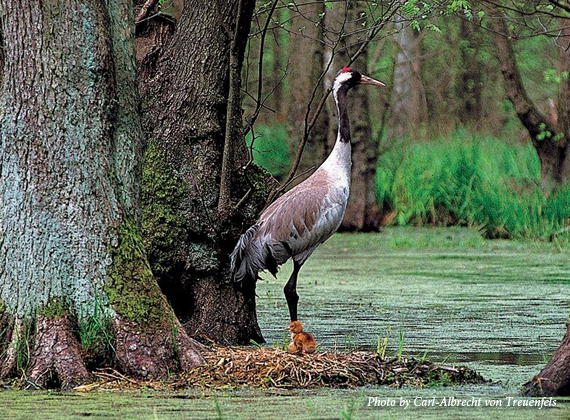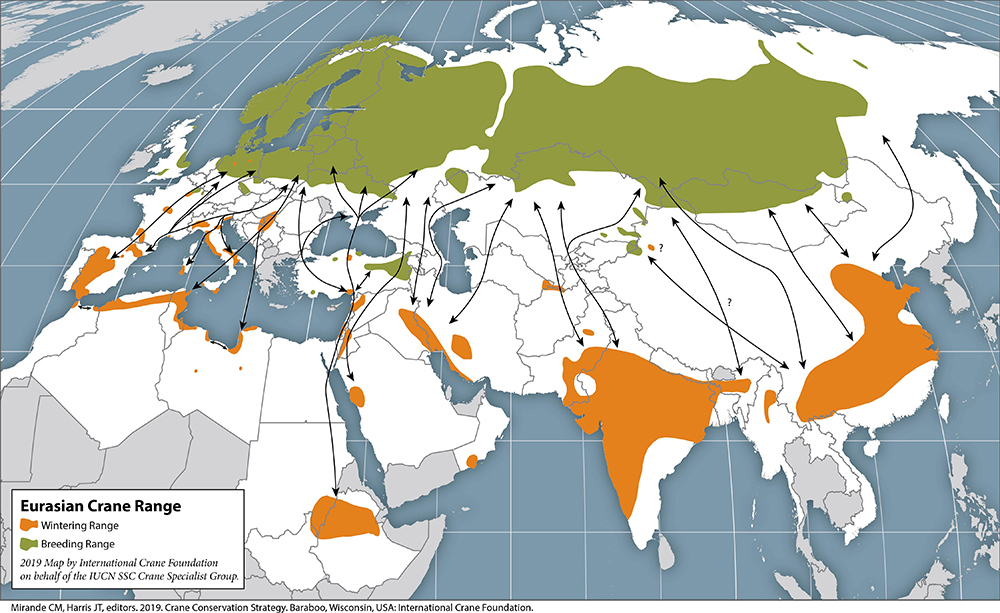
SPECIES: Grus grus
HEIGHT: ~ 115 cm, 4 ft
WEIGHT: ~ 5.5 kg, 12 lbs
WINGSPAN: ~ 210 cm, 7 ft
POPULATION: >700,000
TREND: Western population increasing; Eastern population mixed; Transcaucasian and Tibetan populations decreasing
STATUS: IUCN: LC; Cites Appendix II; CMS II
IDENTIFICATION
Adults – slate grey body, red crown, forehead and throat are black, white stripe stretches from behind the eyes to the upper back, black legs; juveniles – pale grey body, cinnamon-brown head.
RANGE
The breeding range of the Eurasian Crane extends from northern and western Europe across Eurasia to northern Mongolia, northern China and eastern Siberia. The winter range includes portions of France and the Iberian Peninsula, regions along the Tyrrhenian and Mediterranean seas, north and east Africa, the Middle East, India and southern and eastern China.

DIET
Insects, waste and sown grain, acorns, amphibians, reptiles and small mammals.
CALL
Listen to Eurasian Crane calls:
![]() Contact Call | A soft, purring call expressing reassurance and location.
Contact Call | A soft, purring call expressing reassurance and location.
![]() Guard Call | A sharp, single call expressing alarm.
Guard Call | A sharp, single call expressing alarm.
![]() Unison Call | A duet performed by a pair, to strengthen their bond and protect their territory.
Unison Call | A duet performed by a pair, to strengthen their bond and protect their territory.
THREATS
Habitat loss, changes in agriculture practices and hunting in certain areas.
OUR PLAN
Monitoring the status of cranes and their habitats from South Asia to Australia and implementing conservation strategies to address emerging threats. We are:
- Monitoring wintering populations of Eurasian Cranes in South Asia and, with partners, identifying threat mitigation strategies to secure the future of these species.
- Helping develop a joint collaboration between Ethiopia, Germany and Israel to resolve conflicts between Eurasian Cranes and farmers. Eurasian Cranes are a threat to freshly planted crops during certain times of the year, and we are investigating proactive solutions to mitigate serious problems before drastic steps such as poisoning or shooting cranes are taken.
Learn more about Eurasian Cranes:
